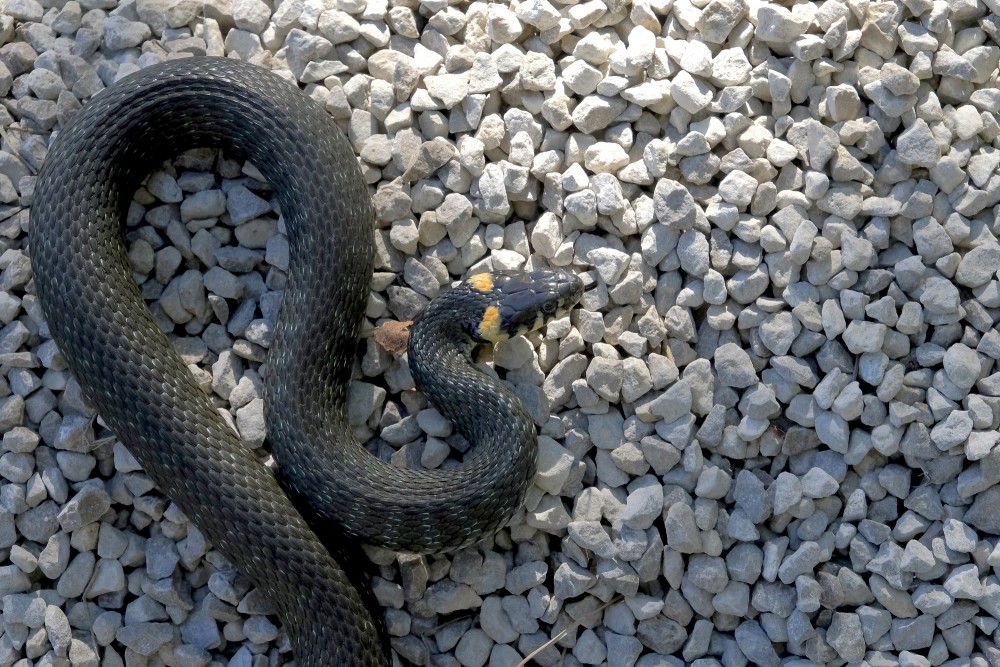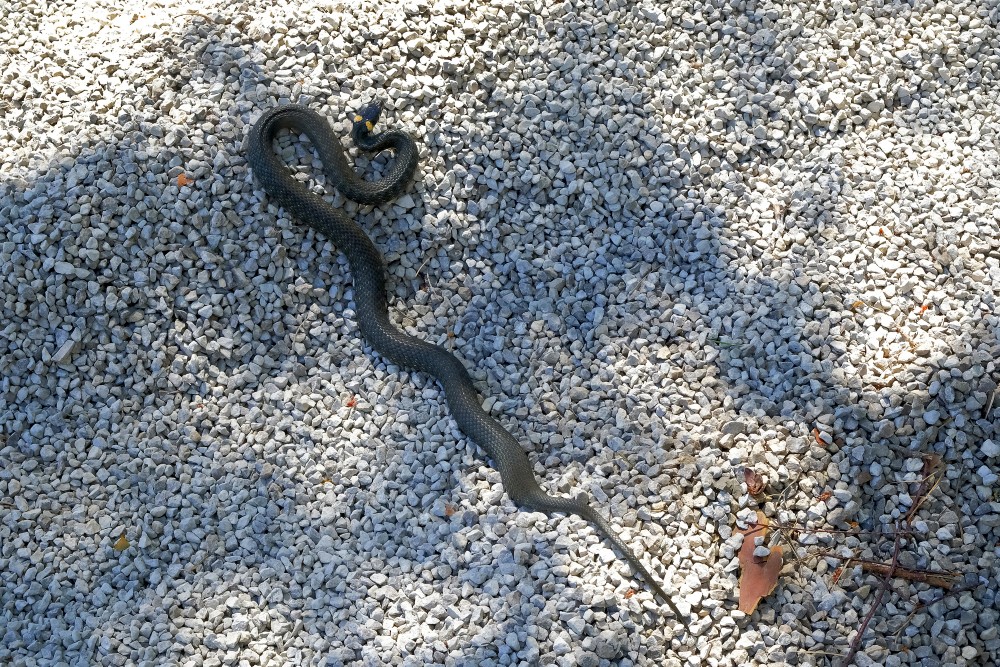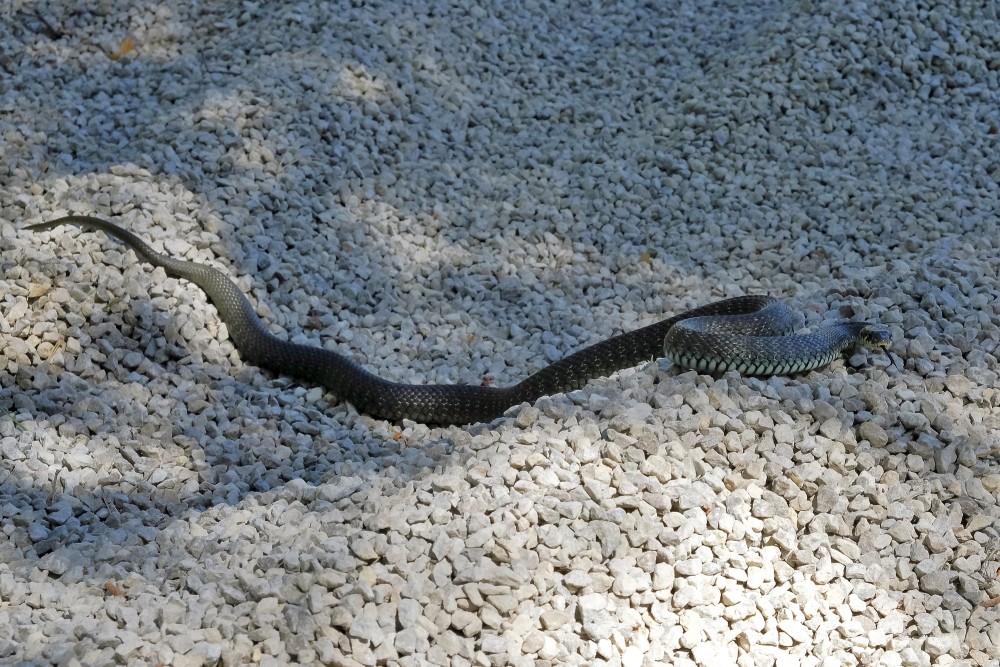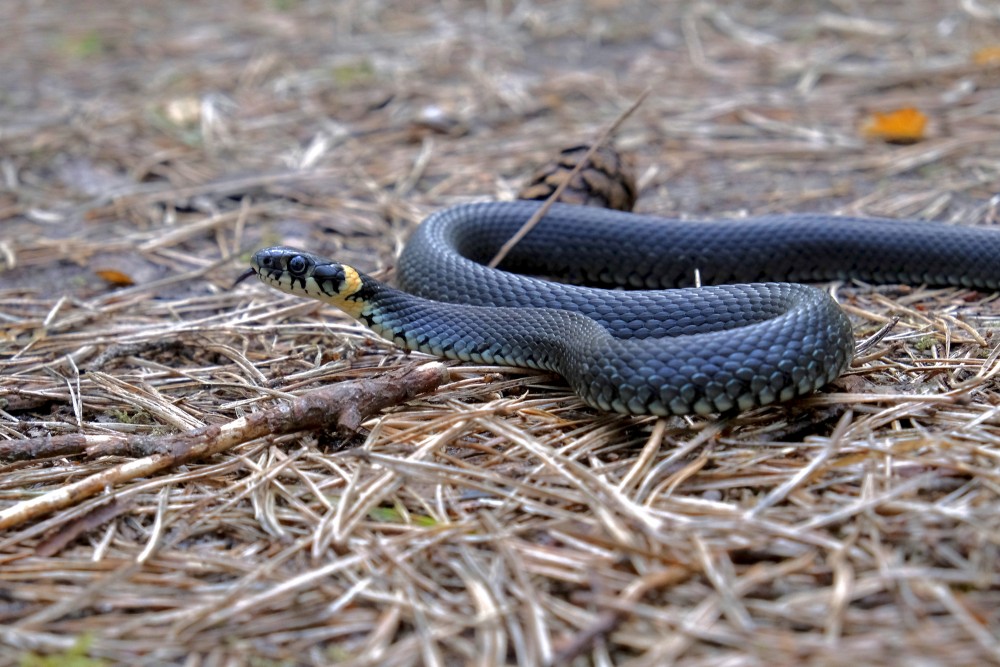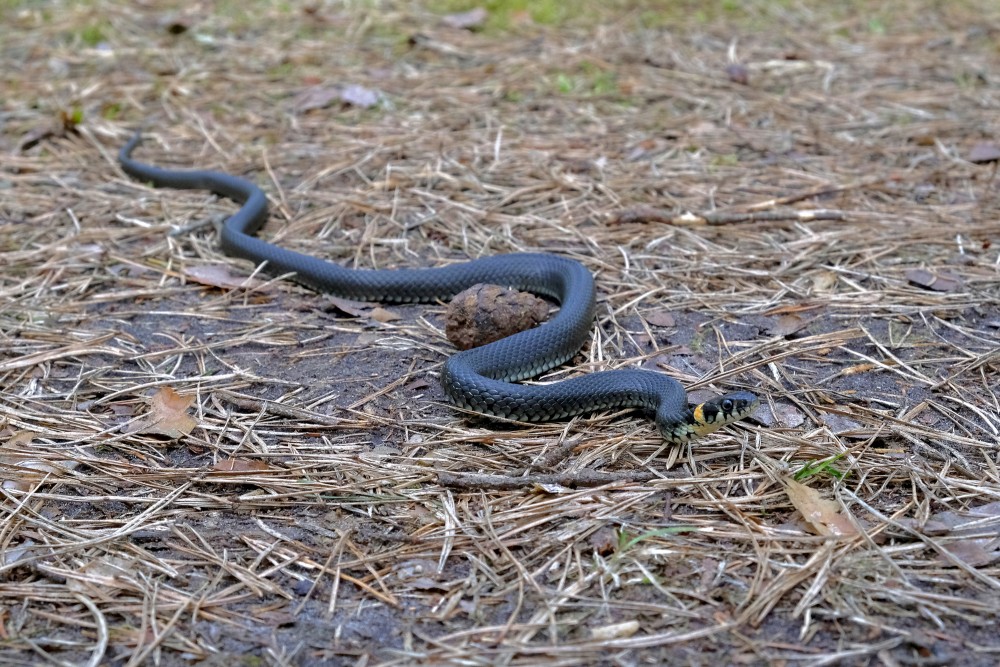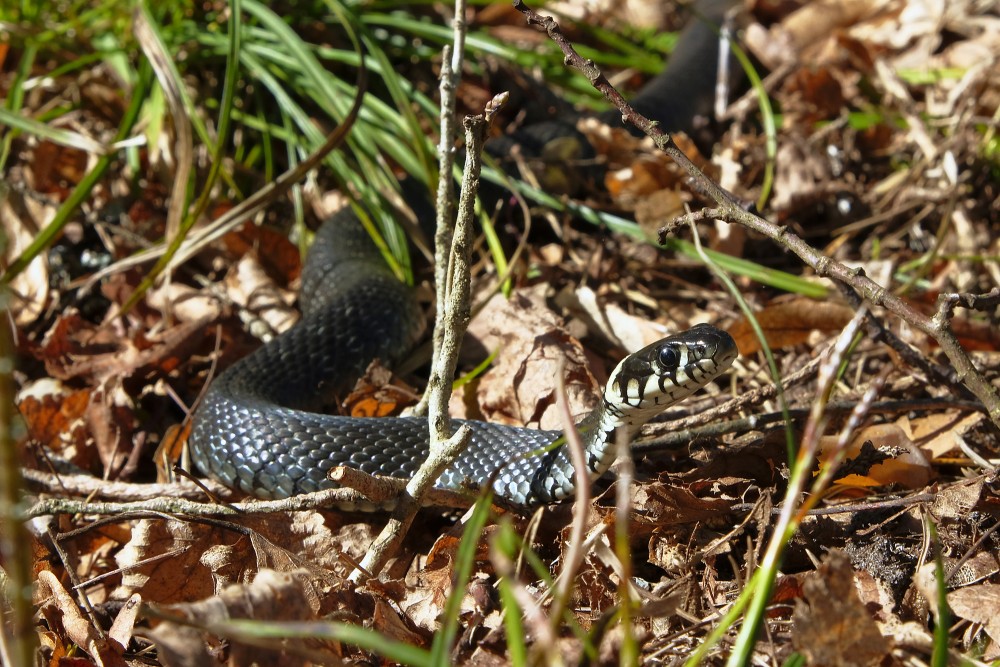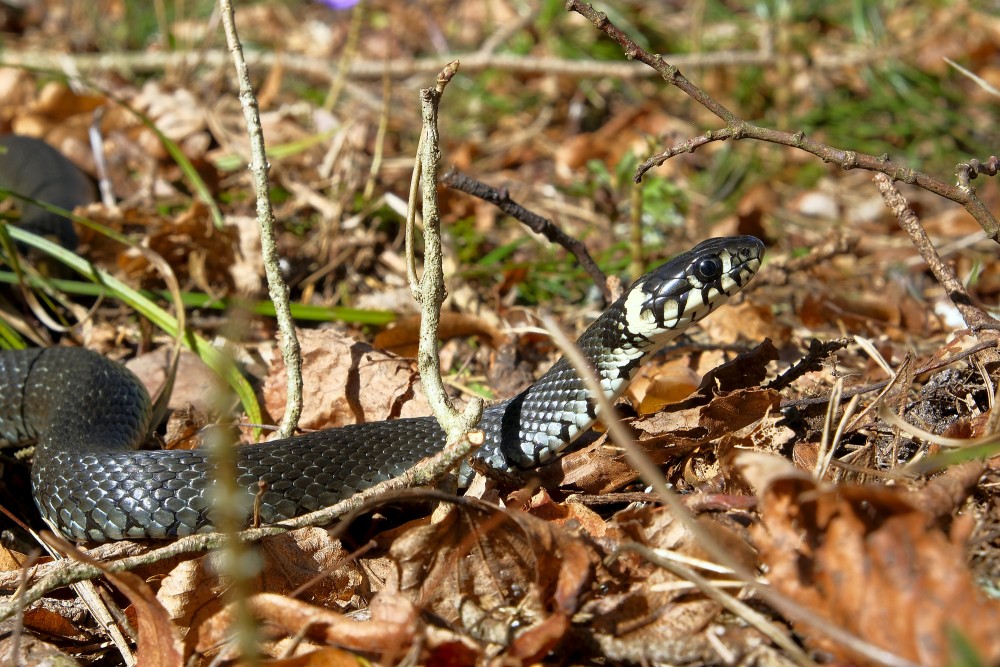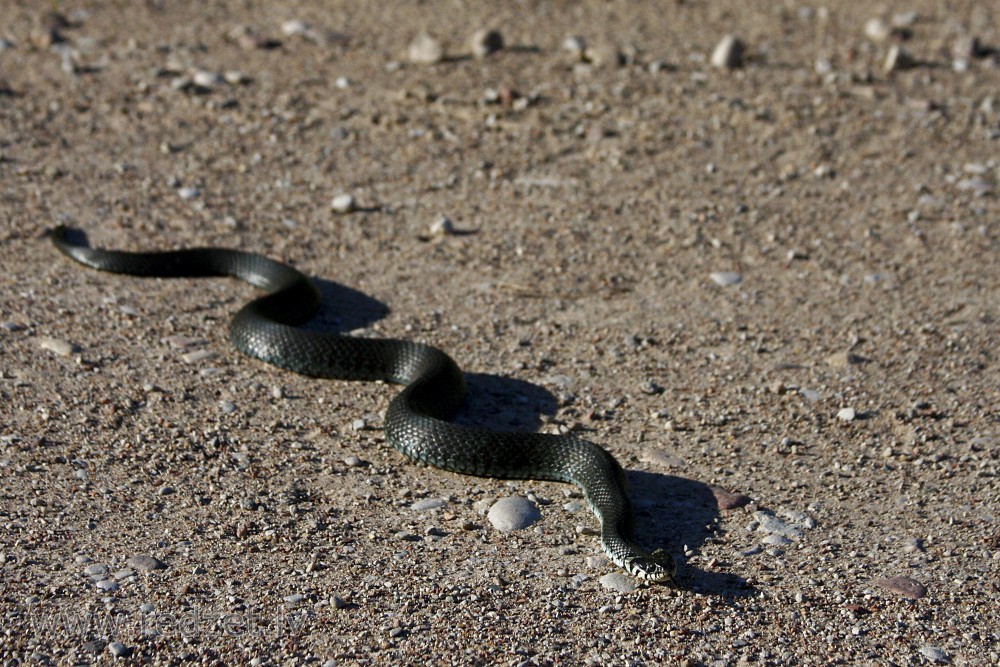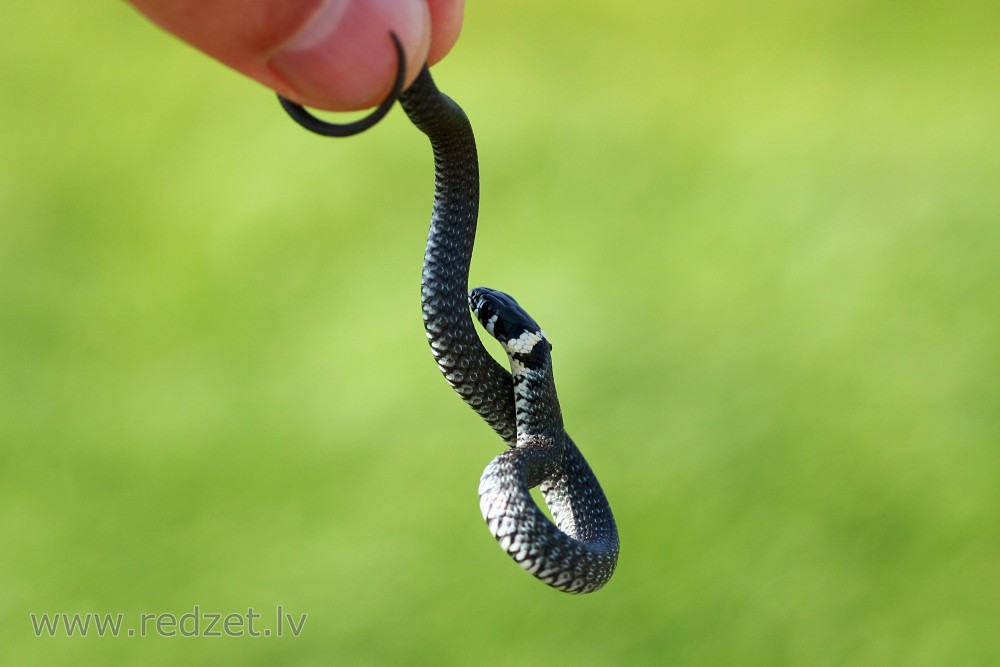Grass snake (Natrix natrix)
The grass snake (Natrix natrix), sometimes called the ringed snake or water snake, is a Eurasian non-venomous snake. It is often found near water and feeds almost exclusively on amphibians. The barred grass snake, Natrix helvetica, was split off as a separate species in 2017.
Description
The grass snake is typically dark green or brown in colour with a characteristic yellow collar behind the head, which explains the alternative name ringed snake. The colour may also range from grey to black, with darker colours being more prevalent in colder regions, presumably owing to the thermal benefits of being dark in colour. The underside is whitish with irregular blocks of black, which are useful in recognizing individuals. Weight is about 240 g (8 oz).
Distribution
The grass snake is widely distributed in mainland Europe, ranging from mid Scandinavia to southern Italy. It is also found in the Middle East and northwestern Africa. British grass snakes were thought to belong to the subspecies N. n. helvetica, though this is now recognised as a separate species.
This species was considered to be one of only three snakes to occur in Great Britain but the grass snakes in Great Britain have now been reidentified as barred grass snake Natrix helvetica, any records of N. natrixin Britain are now considered to have originated from imported specimens.
Ecology
Feeding
Grass snakes prey mainly on amphibians, especially the common toad and the common frog, although they may also occasionally eat ants and larvae. Captive snakes have been observed taking earthwormsoffered by hand, but dead prey items are never taken. The snake will search actively for prey, often on the edges of water, using sight and sense of smell (using Jacobson's organ). They consume prey live without using constriction.
Habitat
The preferred habitat appears to be open woodland and "edge" habitat, such as field margins and woodland borders, as these may offer adequate refuge while still affording ample opportunity for thermoregulation through basking. Pond edges are also favoured and the relatively high chance of observing this secretive species in such areas may account for their perceived association with ponds and water.
Grass snakes, as with most reptiles, are at the mercy of the thermal environment and need to overwinter in areas which are not subject to freezing. Thus, they typically spend the winter underground where the temperature is relatively stable.
Reproduction
As spring approaches, the males emerge first and spend much of the day basking in an effort to raise body temperature and thereby metabolism. This may be a tactic to maximise sperm production, as the males mate with the females as soon as they emerge up to two weeks later in April, or earlier if environmental temperatures are favourable. The leathery-skinned eggs are laid in batches of eight to 40 in June to July and hatch after about 10 weeks. To survive and hatch, the eggs require a temperature of at least 21 °C (70 °F), but preferably 28 °C (82 °F), with high humidity. Rotting vegetation, such as compost heaps, are preferred locations. The young are about 18 centimetres (7 in) long when they hatch and are immediately independent.
Migration
After breeding in summer, snakes tend to hunt and may range widely during this time, moving up to several hundred metres in a day.Prey items tend to be large compared to the size of the snake, and this impairs the movement ability of the snake. Snakes which have recently eaten rarely move any significant distance and will stay in one location, basking to optimize their body temperature until the prey item has been digested. Individual snakes may only need two or three significant prey items throughout an entire season.
en.wikipedia.org
https://en.wikipedia.org/wiki/Grass_snake
Continue reading
